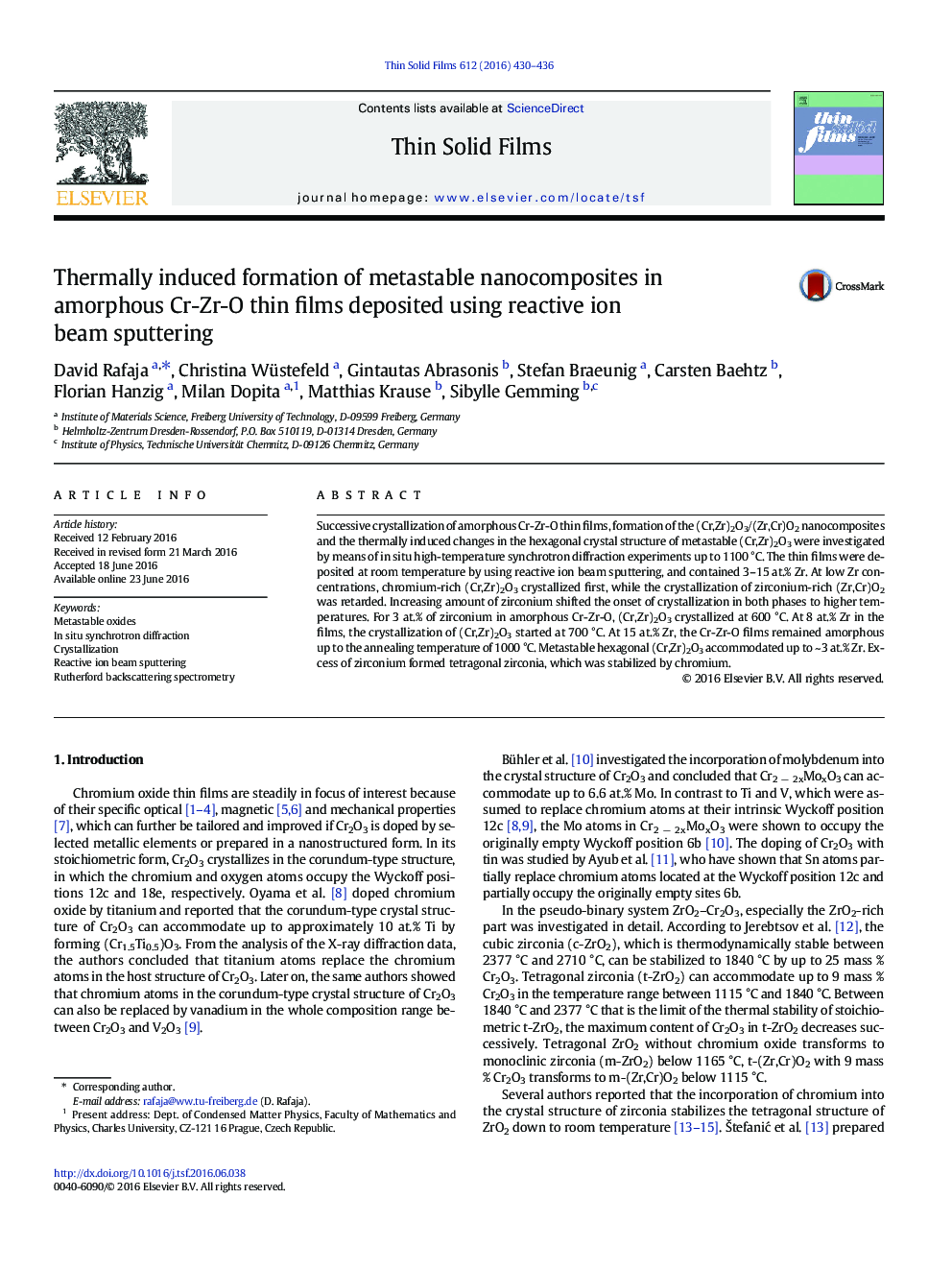| Article ID | Journal | Published Year | Pages | File Type |
|---|---|---|---|---|
| 1663913 | Thin Solid Films | 2016 | 7 Pages |
•Amorphous Cr-Zr-O thin films were deposited using reactive ion beam sputtering.•After annealing in vacuum, metastable (Cr,Zr)2O3/(Zr,Cr)O2 nanocomposites form.•The crystallization temperature depends strongly on the Zr concentration.•Metastable hexagonal (Cr,Zr)2O3 accommodates up to 3.2 at.% of zirconium.•Zirconium oxide crystallizes in tetragonal form, as it is stabilized by chromium.
Successive crystallization of amorphous Cr-Zr-O thin films, formation of the (Cr,Zr)2O3/(Zr,Cr)O2 nanocomposites and the thermally induced changes in the hexagonal crystal structure of metastable (Cr,Zr)2O3 were investigated by means of in situ high-temperature synchrotron diffraction experiments up to 1100 °C. The thin films were deposited at room temperature by using reactive ion beam sputtering, and contained 3–15 at.% Zr. At low Zr concentrations, chromium-rich (Cr,Zr)2O3 crystallized first, while the crystallization of zirconium-rich (Zr,Cr)O2 was retarded. Increasing amount of zirconium shifted the onset of crystallization in both phases to higher temperatures. For 3 at.% of zirconium in amorphous Cr-Zr-O, (Cr,Zr)2O3 crystallized at 600 °C. At 8 at.% Zr in the films, the crystallization of (Cr,Zr)2O3 started at 700 °C. At 15 at.% Zr, the Cr-Zr-O films remained amorphous up to the annealing temperature of 1000 °C. Metastable hexagonal (Cr,Zr)2O3 accommodated up to ~ 3 at.% Zr. Excess of zirconium formed tetragonal zirconia, which was stabilized by chromium.
